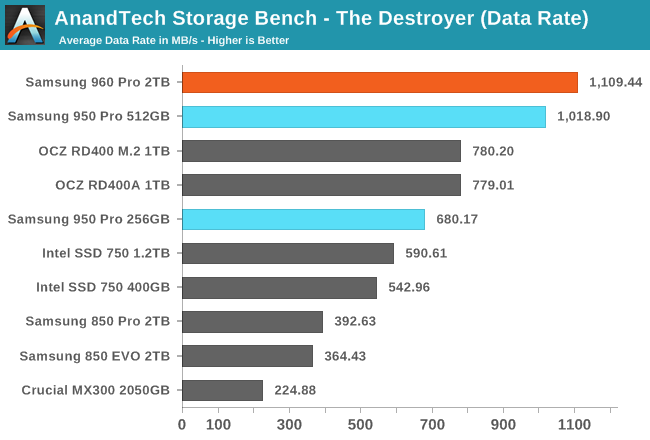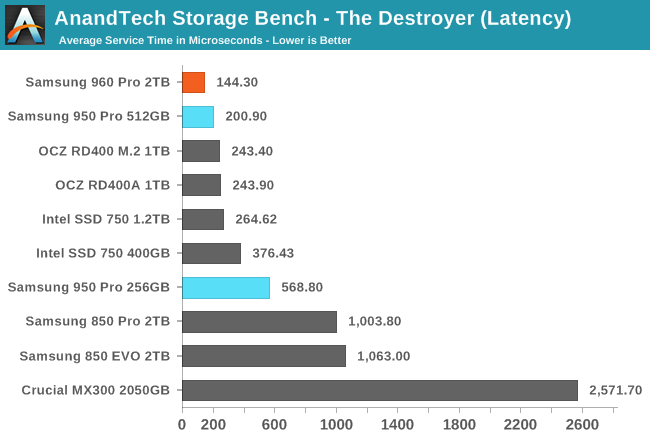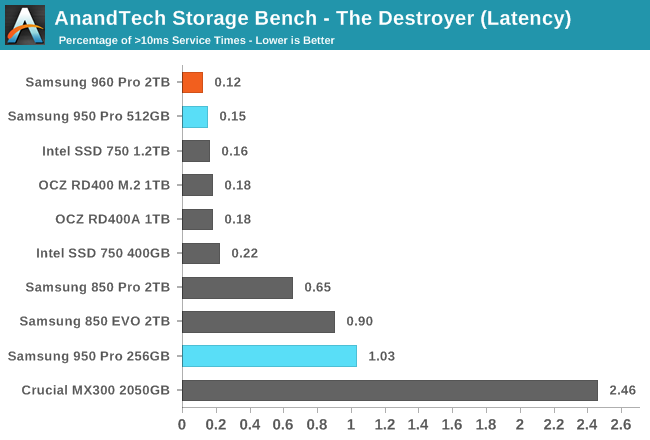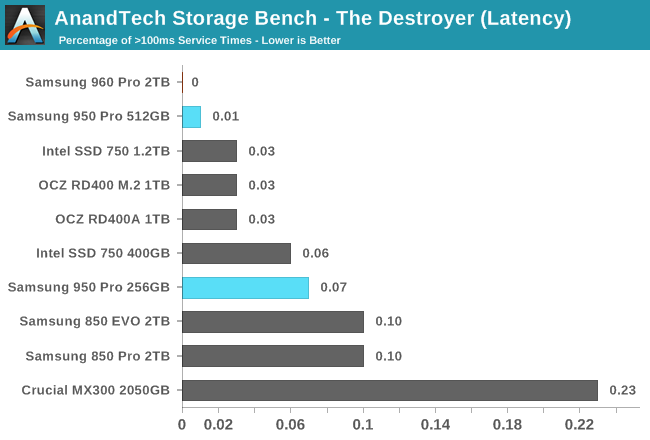The Samsung 960 Pro (2TB) SSD Review
by Billy Tallis on October 18, 2016 10:00 AM ESTAnandTech Storage Bench - The Destroyer
The Destroyer is an extremely long test replicating the access patterns of very IO-intensive desktop usage. A detailed breakdown can be found in this article. Like real-world usage and unlike our Iometer tests, the drives do get the occasional break that allows for some background garbage collection and flushing caches, but those idle times are limited to 25ms so that it doesn't take all week to run the test.
We quantify performance on this test by reporting the drive's average data throughput, a few data points about its latency, and the total energy used by the drive over the course of the test.

The 2TB 960 Pro sets a new record with a higher average data rate than the 950 Pro, but the improvement isn't huge, especially given the large increase in capacity over the 512GB 950 Pro.

The 2TB 960 Pro reduces the average service time by almost 30% compared to the next fastest drive. SATA SSDs can't deliver average service times this low even on the ATSB Light test.

For the first time, a drive has completed The Destroyer without any operations taking more than 100ms. Though at a tighter standard of 10ms, the improvement from the 950 Pro is relatively small.

Essentially no power efficiency was sacrificed for the increased performance of the 960 Pro over its predecessors, though some SATA drives are more efficient.











72 Comments
View All Comments
hansmuff - Wednesday, March 15, 2017 - link
I have to try the 2.0 driver; thanks for your comment! I only installed the 2.1 driver for my 960 pro and it was faster, but DPC went to all shit.WarVance - Friday, October 27, 2017 - link
"...a more thorough comparison of how NVMe drivers and operating system versions affect performance will be coming in the future."Has this been published? I'm very interested in just such an analysis. I recently obtained an Intel 750 400GB card and want to know all about the ideal driver setup under Windows 10 and possibly 7.